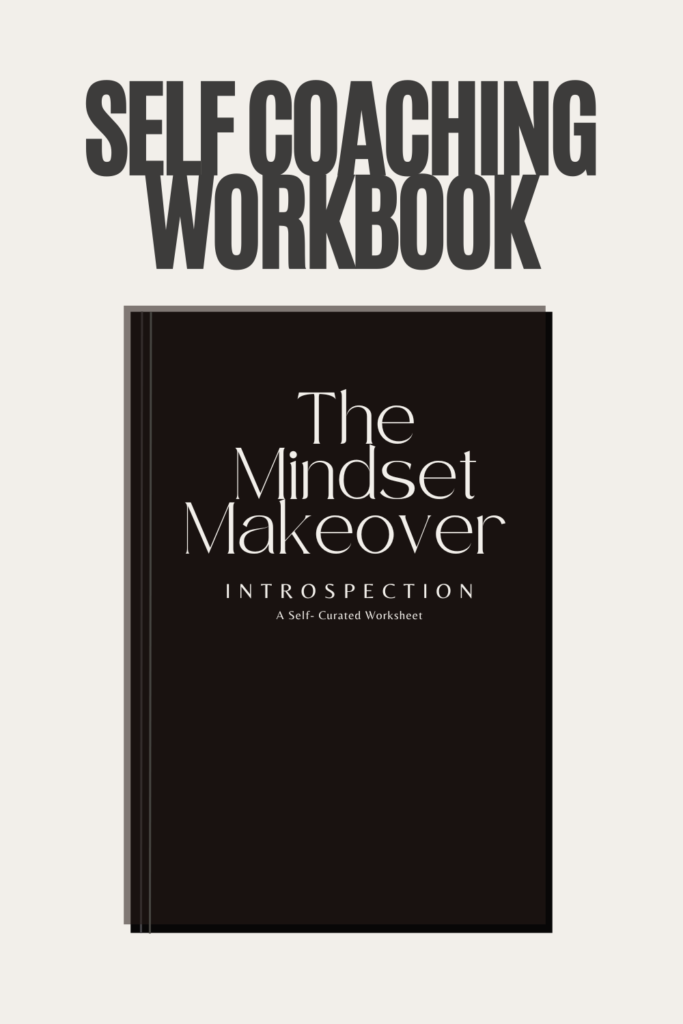Is Your Bedroom Secretly Sabotaging Your Sleep and Productivity?
Working from home has become an everyday reality for many of us. But let’s be honest—sometimes it’s hard to draw the line between your cozy, restful bedroom and your work zone.
Ever found yourself sprawled across your bed with your laptop, trying to juggle work and comfort, only to feel the weight of exhaustion creeping in? You’re not alone.
The truth is, your bedroom could be the perfect place for both relaxation and productivity if you set it up properly. It’s all about creating a comfortable space for sleep but functional enough for work.
In this blog post, we’ll explore 13 ways to refresh your bedroom for work-from-home comfort, turning it into a space that boosts productivity, promotes relaxation, and supports your overall well-being.
By the end of this guide, you’ll have clear, actionable tips to create an environment that enhances focus while still allowing you to unwind after the day.
Whether you’re setting up a new home office or just giving your current space a refresh, these changes will make a difference.
How To Make Your Bedroom A Sanctuary And A Workspace?
1. Create a Dedicated Workspace
The Mistake: Working from Your Bed
I get it. Your bed is comfy. The blankets are warm, and you’re used to sitting on them to scroll through your phone. But when you turn it into your office, it becomes a magnet for procrastination.
Working from bed can blur the lines between relaxation and productivity, leading to distractions and burnout.
The Solution: Separate Your Workspace and Rest Area
To start creating a bedroom that’s both restful and productive, dedicate a clear space for work. This could mean setting up a desk in a corner or near a window where natural light pours in.
Your bedroom is a private space, so it’s important to carve out a work zone where you can focus without the temptation of your comfy bed.
When your brain recognizes this space as “work,” it’ll be easier to get into a productive mindset.
Here are some tips:
- Choose a spot in the room with good lighting (natural light is a game-changer for mood and productivity).
- Invest in a desk and an ergonomic chair that supports your posture for long hours.
- Keep work supplies organized and stored neatly—don’t let papers or gadgets spill over into the rest of the room.
2. Invest in Ergonomic Furniture
The Mistake: Settling for Cheap Furniture That Hurts Your Body
Many people try to work from their bed, couch, or with a low-quality chair, which leads to discomfort and aches after just a few hours of work.
This can cause long-term health issues like back pain, headaches, or neck stiffness.
The Solution: Prioritize Comfort and Health with Ergonomics
Working from home means sitting for long hours, so investing in ergonomic furniture is not just a luxury—it’s a necessity.
The right chair and desk set-up will not only improve your comfort but also boost your energy levels and productivity.
Ergonomic furniture encourages better posture, reduces strain on your body, and keeps you focused.
Here’s how to set up an ergonomic work area:
- Find a chair with lumbar support and adjustable height.
- Keep your feet flat on the ground and your desk at elbow height.
- Use a keyboard and mouse that are comfortable for your wrists and hands.
- Make sure your monitor is at eye level, so you’re not straining your neck.
3. Declutter for Clarity
The Mistake: A Cluttered Room Equals a Cluttered Mind
I’m sure you’ve experienced this: a messy room leads to a messy mind. The more cluttered your bedroom is, the harder it becomes to focus on work or relax.
A cluttered space creates visual chaos, making it difficult to clear your head and get into a productive zone.
The Solution: Keep Your Bedroom Clean and Organized
Decluttering your bedroom for work-from-home comfort is crucial for boosting productivity and maintaining mental clarity.
When your bedroom is tidy, your brain can focus better, and your work performance improves. The act of organizing itself can feel empowering, and it can help you stay on top of tasks with ease.
Here’s how to declutter and stay organized:
- Sort through your items and get rid of things you don’t need.
- Invest in storage solutions like baskets, shelves, and drawer organizers to keep everything in its place.
- Use minimal decor that brings you joy but doesn’t overcrowd your space.
- Make your bed every morning—this simple act instantly makes your room feel more organized.
4. Let in Natural Light
The Mistake: Working in a Dark, Dreary Room
Artificial lighting can create an oppressive atmosphere, leaving you feeling drained and unmotivated. If your bedroom is too dark, it can even affect your mood and productivity.
Lack of sunlight can lead to fatigue, headaches, and even seasonal affective disorder (SAD).
The Solution: Maximize Natural Light
One of the easiest ways to refresh your bedroom for work-from-home comfort is by bringing in more natural light.
Sunlight is proven to improve mood, boost energy, and help with concentration. Opening your curtains or blinds during the day can make your workspace more lively and welcoming.
Tips:
- Place your desk near a window to take advantage of natural light.
- Use light, airy curtains to let in more daylight without sacrificing privacy.
- If natural light is limited, consider adding full-spectrum light bulbs to mimic daylight.
5. Optimize Your Bed for Relaxation
The Mistake: Forgetting About the Importance of a Restful Bed
Your bed is where you rest, recharge, and recover. But when you’re working from your bedroom, it can be easy to let your bed become a source of stress rather than relaxation.
A bed that’s too messy, uncomfortable, or cluttered can make it difficult to unwind after a long day of work.
The Solution: Make Your Bed a True Sanctuary
Your bed should be a place where you can fully disconnect and recharge for the next day’s work. Make it a relaxing environment by focusing on comfort and cleanliness.
A well-made bed, with soft sheets and cozy blankets, can do wonders for your mental well-being.
How to optimize your bed for relaxation:
- Invest in high-quality sheets and bedding that feel soft and luxurious.
- Keep the area around your bed clear of work items—don’t let your laptop or papers end up on your nightstand.
- Consider using aromatherapy with calming scents like lavender to promote relaxation.
6. Create a Calming Atmosphere
The Mistake: Creating a Chaotic and Stressful Environment
A bedroom filled with distractions, loud noises, or poor lighting can make it hard to focus or relax.
When your bedroom feels chaotic, your stress levels rise, and your ability to get into a productive flow is disrupted.
The Solution: Cultivate Calm and Serenity
Your bedroom should be a place of calm where you can work without feeling overwhelmed. Focus on elements that soothe your senses, like calming colors, soft lighting, and pleasant scents.
Small adjustments can help transform your bedroom into a peaceful sanctuary supporting productivity and relaxation.
Set a calming atmosphere:
- Use soft lighting like table lamps or string lights to create a relaxed ambiance.
- Add essential oils or scented candles with calming scents like chamomile or eucalyptus.
- Consider playing soft background music or white noise to help you concentrate.
Related post:
- How to Achieve Work-life Harmony While Working Remotely
- Success at Home: How Independent Women Are Making Money Online
7. Choose the Right Color Palette for a Dual-Purpose Space.
The Mistake: Using Bold or Distracting Colors
Bright, bold colors may energize a room, but they can also overstimulate your senses, making it harder to focus during work hours or unwind at night.
The Solution: Choose Calming, Neutral Tones
Neutral or muted color palettes create a sense of calm and balance, ideal for a dual-purpose space.
Soft tones like beige, light gray, or pastel shades can help you stay focused while maintaining a serene environment for rest.
Tips:
- Incorporate pops of color through accessories like cushions or artwork without overwhelming the room.
- Use natural elements, like wooden furniture or woven baskets, to add warmth and texture.
- Stick to a cohesive color theme to make the space feel harmonious.
8. Make Use Of Storage Solutions
The Mistake: Ignoring Smart Storage Options
A small space can quickly feel cluttered without proper storage solutions, leading to frustration and inefficiency.
The Solution: Utilize Smart Storage or Organizers for a Tidy Workspace
Take advantage of vertical storage, hidden compartments, and multipurpose furniture to keep your space organized. Check out this Curated list of Must-Have Amazon Bestselling Organizers
A tidy room minimizes distractions and helps maintain a clear mind for work.
Storage Solution Tips:
- Use under-bed storage bins for items you don’t need daily.
- Install floating shelves to keep your desk free of clutter.
- Choose furniture with built-in storage, like ottomans or desks with drawers.
9. Bring Nature Indoors
The Mistake: Overlooking the Power of Plants
A space devoid of greenery can feel sterile and uninspiring, which can negatively impact your mood and productivity.
The Solution: Add Houseplants for a Fresh, Vibrant Touch
Plants not only improve air quality but also create a calming and refreshing atmosphere.
They can transform your bedroom into a lively and welcoming workspace.
Ideas:
- Choose low-maintenance plants like pothos, succulents, or ZZ plants.
- Place small potted plants on your desk or windowsill for a touch of greenery.
- Use hanging planters if floor space is limited.
10. Lighting Is The Secret To Productivity
The Mistake: Relying Solely on Overhead Lights
Overhead lights can be harsh and unflattering, which may cause eye strain and fatigue over time.
The Solution: Layer Your Lighting for Versatility
Invest in layered lighting that serves both work and relaxation.
Desk lamps, floor lamps, and ambient string lights can create a functional yet cozy environment.
Room Lighting Hacks:
- Use a desk lamp with adjustable brightness for focused work sessions.
- Opt for warm-toned bulbs for a calming atmosphere in the evenings.
- Place lights strategically to minimize glare on your screen.
11. Personalize Your Workspace
The Mistake: Forgetting to Personalize Your Workspace
A generic, impersonal workspace can feel dull and uninspiring, making it harder to stay motivated.
The Solution: Add Personal Touches for Inspiration
Decorate your workspace with items that spark joy and creativity, like motivational quotes, artwork, or meaningful mementos.
Personalized Workspace Ideas:
- Create a vision board with your goals and aspirations.
- Display photos of loved ones or places that inspire you.
- Use colorful stationery or a fun desk organizer to make work feel less mundane.
12. Define your Work Hours
The Mistake: Working Without Boundaries
Without clear work hours, it’s easy for your job to take over your personal life, leading to burnout.
The Solution: Establish a Routine to Separate Work and Rest
Set a schedule that defines your work hours and stick to it.
This will help maintain a work-life balance, even when your bedroom serves as your office.
Tips:
- Use an alarm to signal the start and end of your workday.
- Create a short “commute” by stepping outside or doing a brief activity to transition between work and relaxation.
- Avoid checking emails or work messages after hours.
13. Upgrade Your Tech Setup for Comfort
The Mistake: Using Outdated or Inefficient Tools
A poor tech setup can slow you down and cause unnecessary stress, making your workday longer and more frustrating.
The Solution: Invest in High-Quality, Ergonomic Tech
Upgrade your tech with tools that enhance your efficiency and reduce strain.
This includes ergonomic keyboards, a reliable laptop stand, and noise-canceling headphones.
Tips:
- Ensure your internet connection is fast and stable for virtual meetings.
- Use cable organizers to prevent your workspace from looking messy.
- Keep your devices clean and updated to prevent technical issues.
the bottom line is.
Creating a productive and comfortable work-from-home setup in your bedroom doesn’t have to be complicated.
It’s all about making small, intentional changes that improve both your work environment and your relaxation space.
By separating your workspace from your rest area, investing in ergonomic furniture, and incorporating elements that promote focus and relaxation, you can refresh your bedroom for work-from-home comfort.
Remember: A well-designed bedroom is the key to achieving the perfect balance between work and rest.
Frequently Asked Questions
1. How do I create a work-from-home space in a small bedroom?
You can still create a dedicated workspace by choosing multifunctional furniture, like a compact desk with built-in storage. Keep your workspace minimal and well-organized to maximize space.
2. What are the best colors for a productive work-from-home bedroom?
Soft, neutral tones like light gray, beige, or pastel colors are ideal for creating a calm, focused atmosphere. You can add a pop of color with accessories for visual interest.
3. How can I make my bedroom more ergonomic for working long hours?
Ensure your desk and chair are adjustable to fit your height. Keep your monitor at eye level and use a comfortable chair with lumbar support to prevent back and neck strain.
















12 comments
Lucy
Some amazing tips here! I wouldn’t work from my bed as I think it’s much better to work from a desk in a room with good, natural light x
Lucy | http://www.lucymary.co.uk
LaniAuthor
Absolutely! Working from a desk with plenty of natural light is a game-changer for focus and energy. I’m so glad you enjoyed the tips! For more ideas on optimizing your workspace and balancing productivity with wellness, check out my blog anytime.
Alana
Thanks for sharing, great tips for maintaining a calm environment in your bedroom.
LaniAuthor
You’re welcome! I’m so glad you found the tips helpful. A calm bedroom truly sets the tone for restful sleep and overall well-being. For more ideas on creating balanced and peaceful spaces, feel free to explore my blog anytime!
Angie
Love these suggestions. I don’t work from bed but I do some work from a recliner in the living room. I’m all set up! But mostly at my office desk. Working diligently on decluttering because we are moving soon. And I hope my next office has tons of windows. Good stuff thanks.
LaniAuthor
It sounds like you have a flexible and functional setup—amazing! Decluttering ahead of a move is such a great way to start fresh, and I’m sure your next office with lots of windows will be a bright, inspiring space. Wishing you all the best with your move! For more tips on creating productive and balanced spaces, feel free to explore my blog.
Jasmin
Great advice and I agree – Working from home does not have to be complicated. With a pinch of awareness and conscious choices you can turn nearly any place in a productive work place
LaniAuthor
Absolutely! With a bit of intention and creativity, any space can be transformed into a productive work environment. I’m so glad you resonated with the advice! For more tips on optimizing your remote work setup and maintaining balance, feel free to explore my blog.
Ann
I really enjoyed reading this! It’s such a relatable topic, and I appreciate how you addressed the challenge of balancing comfort and productivity when working from home.
LaniAuthor
Thank you so much! I’m glad you found the post relatable and helpful. Balancing comfort and productivity can definitely be a challenge, but little adjustments can go a long way. For more tips on mastering the work-from-home lifestyle, feel free to explore my blog—I’ve got you covered!
Antonia
So many amazing tips. I work from home and my productivity improved so much since I stopped working in my bedroom and now have home office.
LaniAuthor
That’s fantastic to hear Antonia,
Having a dedicated home office can make such a difference in boosting focus and productivity. It’s amazing how small changes to your environment can have such a big impact. For more tips on optimizing your work-from-home setup and maintaining balance, feel free to check out my blog anytime!